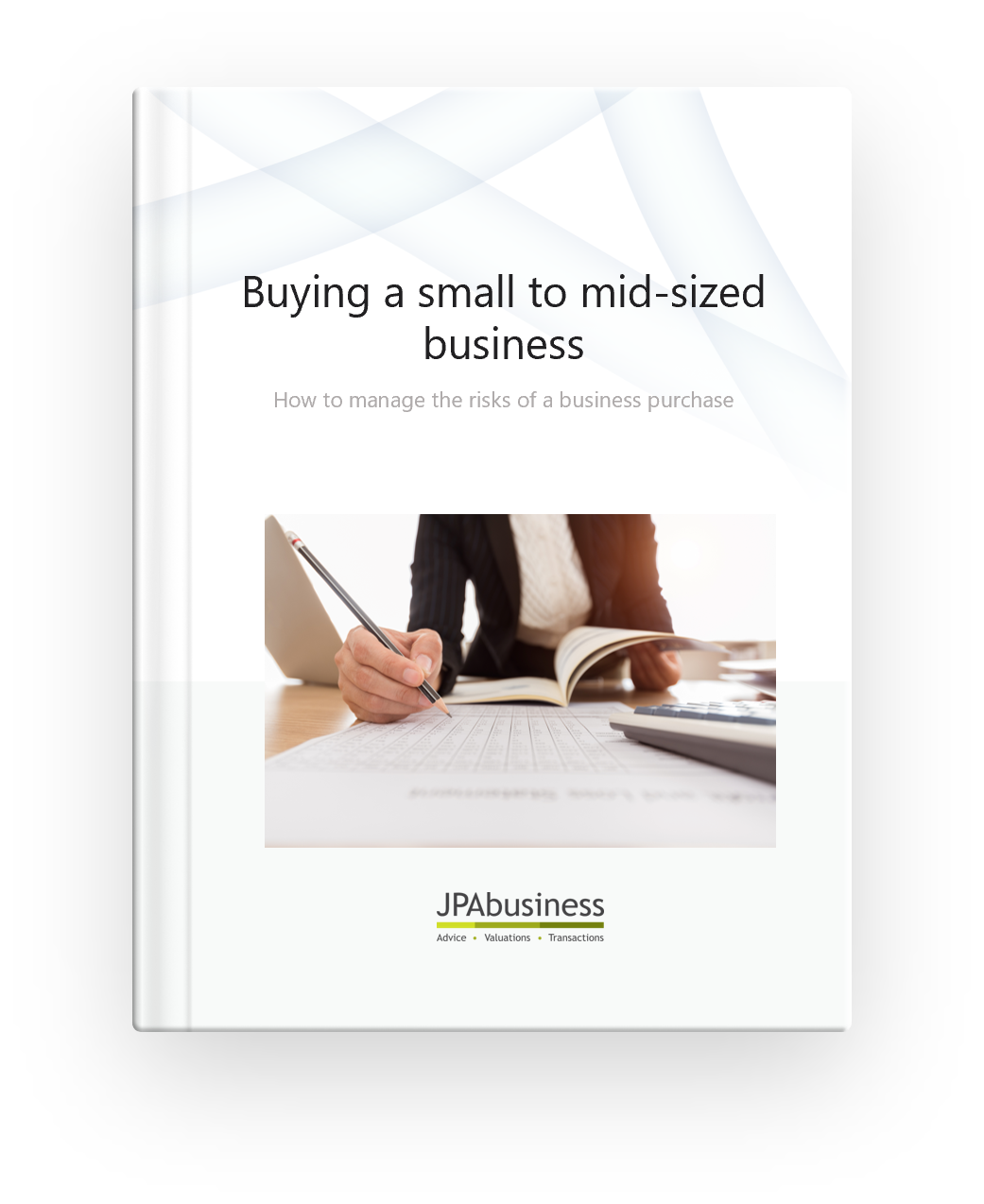Risk and return are two sides of the same coin and most people looking to purchase a business – if it’s not simply to replace full-time employment – should be targeting a return of between 20% and 50% on their investment over time, depending on the business and other factors.
In our experience, the risks associated with business purchases fall into three categories:
- People
- Customers, Suppliers and Market Dynamics
- The Value Exchange
Managing the ‘People’ risks
There are some common risks associated with business purchases, particularly in small to middle-sized businesses that are substantially dependent on an owner or a few senior employees for their success.
Two things can happen if those personnel aren’t retained in the business in an active way:
- The business’s relationships with customers and suppliers may deteriorate;
- The employees’ know-how and corporate knowledge will be lost.
As part of the due diligence processes you need to identify the extent to which a business is reliant on individuals and protect against those risks in the final contract terms.
Here’s an example of how purchasers can use a ‘hard’ provision in the final contract to mitigate this risk:
A business you’re considering buying has very strong earnings, 20-25 employees, and is managed by a single director who founded the company 10 years ago. Relationships with key suppliers and customers are still heavily managed by that director.
A ‘hard’ provision in the final contract may require the vendor to agree to enter into a one-, two- or three-year full-time or part-time employment agreement, to stay with the business and share his or her expertise.
An alternative would be to make the sale conditional on some of the senior staff, such as the sales manager or operations manager, signing an employment contract and transferring as part of the sale.
Taking a softer approach
You can also include ‘soft’ provisions to protect against ‘people’ risk:
While doing due diligence you find your potential business purchase is not heavily reliant on one individual, but you do want to tap into the corporate knowledge, expertise and relationships of the previous management or owner as a ‘sounding board’.
In that case, it’s common to have an agreed period post-completion and transfer that might see the manager or owner be on-hand for one week, one month or three months.
That’s usually on a complementary basis as part of the sale process, however anything outside an initial period may be on a paid consultancy basis.
It’s a jungle out there
It’s a competitive market and not all vendors are retiring and moving out of the industry.
Both the owners and senior people in the business can leave with a lot of knowledge and expertise that can be useful in a competitive environment, so it’s often wise to consider restraint of trade as part of the terms and conditions of any purchase contract.
Restraint of trade is a mechanism to prevent owners going into direct competition with the business post transfer.
It’s a difficult legal area and, as a purchaser, you’ll need to get some legal advice.
Managing the ‘Customer, Supplier and Market Dynamic’ risks
This risk relates to key customers and/or suppliers taking flight from the business you’ve purchased in the early stage of the transfer.
In doing your due diligence it’s very wise to look at both supplier and customer concentration risk.
Where you have a significant concentration of one particular supplier or customer, you should try and protect against that risk.
Here’s an example of how purchasers can use a ‘hard’ provision in the final contract:
The business has five major customers. Customer A is responsible for 60% of sales. Customer A spent $1.5 million on average for the last three years with the business.
The provision in the contract allows the purchaser to hold back in trust 20% of the purchase price of the business for 12 months and pay this on the basis that Customer A’s sales level, for the first 12 months after transfer, does not fall below $1.5 million.
That is a ‘hard’ measure and it’s up for negotiation – some vendors will accept such a provision because they are prepared to back their business, where there is a big risk around concentration of customers.
Other vendors will not, as they will cite that they are no longer in control of the outcome.
It’s then a matter for negotiation. Try and achieve a fair and reasonable win-win compromise. If that smells commercially sound, then you have mitigated the risk – to the extent you can.
A ‘soft’ means of protecting against this risk would be to agree on a very detailed transition and relationship transfer process between the current owner, the important customers and the new owner, for example, joint introduction meetings and a phased handover process with old and new owners involved.
Managing the ‘Value Exchange’ risks
This is the ultimate risk; the doubt a purchaser may have regarding:
- Am I paying fair market value for this business?
The answer here lies in ensuring you have good advice and a sound market valuation and, more importantly, the extent to which you have confidence the business maintainable earnings (BME) are likely to be repeated in the first 12 months to two years of your ownership.
We discussed BME – also known as Sustainable Earnings – in our ebook, How to Assess Business Value in Small to Mid-Sized Businesses. (Remember the diesel engine analogy?)
BME is not about what you do to drive the earnings through investing more money, finding new opportunities or growing the business in different ways.
BME is about what the business is likely to generate in the first 12 months if you just move in and do pretty much what the current owner is doing.
What are the risks regarding BME?
Here’s an example of a low ‘value exchange’ risk:
We recently sold a business for approximately $8 million.
The business had a turnover of about $12 million and was sold with a pipeline of work that was committed with customers, but not yet invoiced, of about $5.5 million.
The business had significant forward earnings projections for the next 12 months, so it rated as a relatively low risk in terms of the value exchange risk.
Alternatively, a business relying on day-to-day jobs, without any work committed into the future, has a higher risk.
It’s okay to pay a fair market value – a multiple of BME, or sustainable earnings – on such a business, but you may also negotiate some risk protection.
Here’s an example of how to protect against that risk:
During the due diligence process you assessed a business as having a BME of $300,000. You agree to pay a multiple of 3 x BME for the business – $900,000 – excluding stock.
However you negotiate that on contract completion you’ll pay 2 x BME and, should the BME be 90% or better than $300,000 in the first year of your operations, you’ll pay the final $300,000 at the end of the 12 months.
I’ve used a very simple example there to introduce the concept; in real life I’ve negotiated lots of permutations of this and there are pros and cons:
- For a purchaser, it adds complexity to a sale process;
- For a vendor, it means you’re sharing risk in a business you no longer have any legal right over.
If there is a fair deal negotiated, it can represent a win-win and allow the transfer to go ahead with confidence for both parties.
You can’t protect against all risks, but …
You need to be prepared to stand your ground in terms of what your requirements are and whether the risks are being well managed to ensure those requirements are being met.
Remember, being in business is about taking risk in order to deliver a return; but successful business is about taking sound and considered commercial risks, ones that are analysed, assessed and understood.
Ultimately, commercial judgement plays a role here, and if you have passion, alignment of skills and capabilities, and a clear view as to how your original requirements are likely to be met, chances are you’ll make a successful business purchase.
If you would like support or advice about any aspect of buying a business, contact the team at JPAbusiness on 02 6360 0360 or 02 9893 1803 for a confidential, obligation-free discussion.


